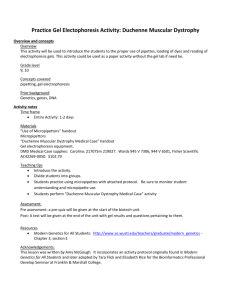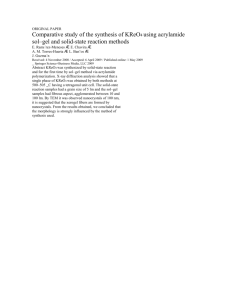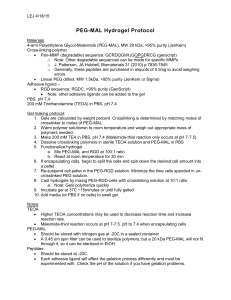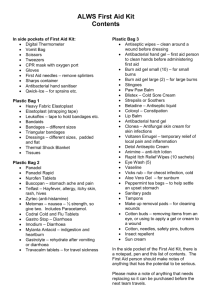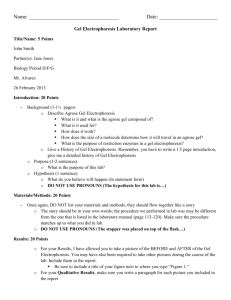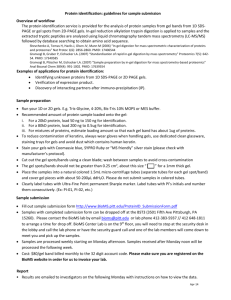RSC Supporting Information with Updates_v5_new
advertisement
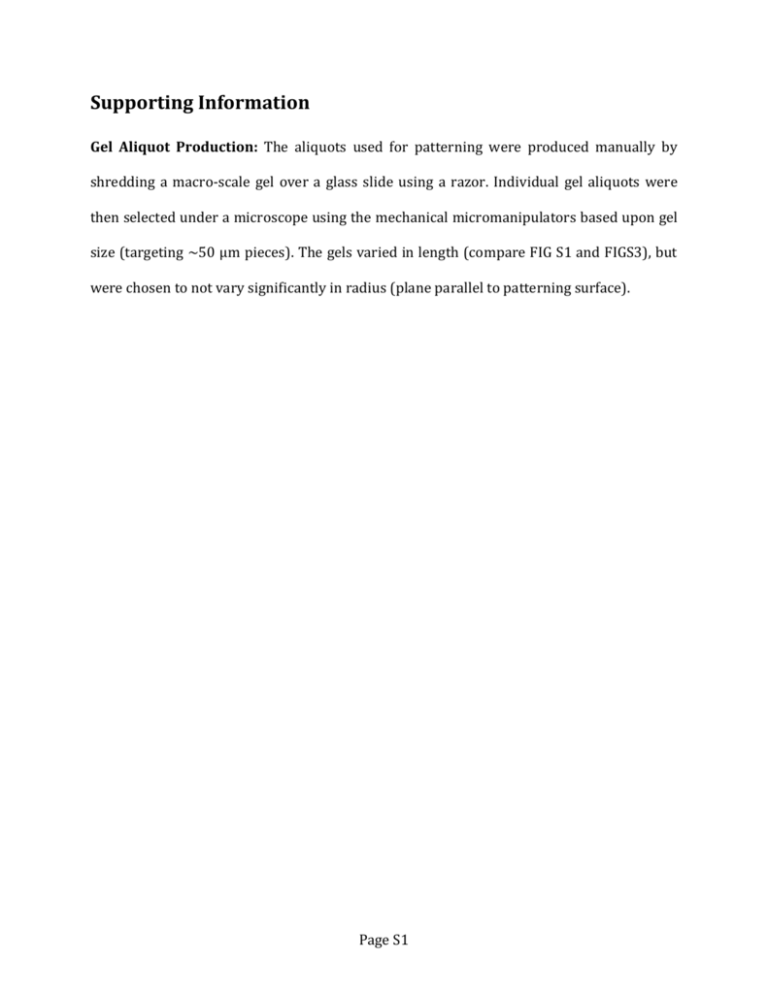
Supporting Information Gel Aliquot Production: The aliquots used for patterning were produced manually by shredding a macro-scale gel over a glass slide using a razor. Individual gel aliquots were then selected under a microscope using the mechanical micromanipulators based upon gel size (targeting ~50 µm pieces). The gels varied in length (compare FIG S1 and FIGS3), but were chosen to not vary significantly in radius (plane parallel to patterning surface). Page S1 Figure S1. Micrograph of the composite gel being manipulated by mechanical microtweezers. The tweezers allow for patterning size selection through grasping different sizes of hydrogel; in addition, the tweezers give the user precise spatiotemporal control over the patterning. Page S2 Figure S2. Micrograph depicting the composite gel. The spores tended to cluster near the surface of the gel due to convective forces present during synthesis. Page S3 Figure S3. Micrograph showing volumetric changes in the FITC-loaded composite gel due to increase in humidity. Page S4 Figure S4. Model showing the mechanism by which spores can attenuate the concentration lowering effects over mid-to-high humidity range compared to a hydrogel control. Page S5





